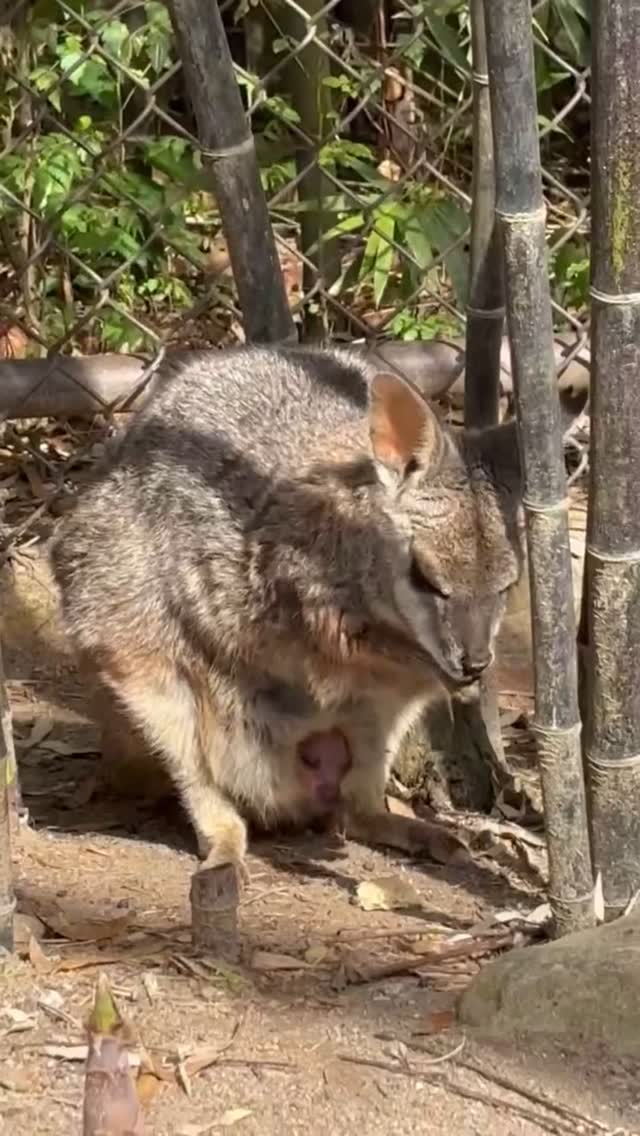- The growth and development of wallaby joeys from birth to independence.
- The significance of a wallaby’s pouch for the joey’s survival and early development.
- Nutritional and environmental needs of young wallabies as they transition to solid food.
- The role of zoos and conservation efforts in protecting wallaby populations.
- Interactive wildlife experiences that connect people with wallabies, highlighting ethical considerations.
In the vibrant tapestry of wildlife, wallabies occupy a special niche. These marsupials, primarily found in Australia, are often admired for their unique reproductive and developmental processes. At the heart of this design is the wallaby joey, which embarks on life’s journey from an incredibly small size, comparable to a cherry. At birth, a joey is not much more than a fragile, helpless bean—less than an inch long and devoid of eyesight or fur. This minute marsupial demonstrates a miraculous travel from the birth canal through the mother’s fur to reach the sanctuary of the pouch. There, it latches onto a teat, where it will stay for months, nourished by its mother’s milk.
The pouch serves as more than just a warm enclosure for this underdeveloped newcomer. It is an extension of the womb, shielding the joey from external elements and predators. Inside, the environment is remarkably comparable to a nurturing nursery. The joey attaches firmly to the teat, receiving a precise combination of nutrients required for its rapid development. The pouch’s role is pivotal, as it supports the early immune system development and overall growth of the joey.
After spending approximately eight months tucked away, the wallaby joey starts its explorative phase. Its curiosity unfolds gradually, with first peeks of its surrounding world from the pouch. These early investigations out from the secure shelter are vital as the young wallaby begins to familiarize itself with its environment, which will eventually lead to foraging on solid food.
The initial transition from milk to solid food marks a significant milestone. The dietary shift is delicate, demanding a gradual acclimatization to grasses and leaves, which constitute the staple diet of adult wallabies. Here, zoo habitats provide a controlled setting, ensuring access to clean, suitable foliage and other nutritional needs, while allowing the wallaby to practice its foraging skills. This dietary evolution is not only essential for its physical growth but also for developing autonomy as the joey transitions out of pouch dependency.
Kangaroo Walkabout exhibits exemplify some of the most exciting encounters for zoo visitors. These immersive experiences enable guests to observe the natural behaviors of wallabies, witnessing their signature hops and social interactions firsthand. Interaction strategies are thoughtfully designed to minimize stress on the animals, balancing conservation education with the wallabies’ welfare.
Zoos play a crucial role beyond providing a habitat for these remarkable creatures. They are instrumental in awareness campaigns and breeding initiatives aiming to safeguard wallabies against threats such as habitat destruction and climate change. The breeding programs within zoos are guided by genetic diversity principles to maintain healthy populations.
Educational programs feature prominently in zoo settings, creating a narrative around the wallaby’s lifecycle and the significance of conservation efforts. Zoo visitors learn not just to admire wallabies but to understand their ecological roles and the importance of preserving their habitats. These programs are crafted to foster a better appreciation of nature and inspire actions supporting wildlife conservation.
Despite the hurdles faced in their native habitats, wallabies hold resilient prospects owing to dedicated conservation initiatives worldwide, showing the synergy between zoological institutions and environmental stewardship. These efforts underscore an essential reality: the role humans play in wildlife preservation is as significant as nature itself.
Connecting humans and wildlife through engaging educational platforms creates a more intuitive understanding of our environmental impact. As emerging stewards of nature, it is vital to recognize and support the intricate balance of these ecosystems. Just like the wallaby joey eventually learns to venture beyond its pouch, we too, must navigate our world with curiosity and responsibility.
*****
Source Description
Look who’s starting to peek out! 👀
This little wallaby joey is getting curious and checking out the big world beyond mom’s pouch! 🦘
Born the size of a cherry, they spend about 8 months snuggled up inside before they’re ready to nibble on solid food.
We can’t wait for this to start hopping around and welcoming guests in Kangaroo Walkabout! 🦘


